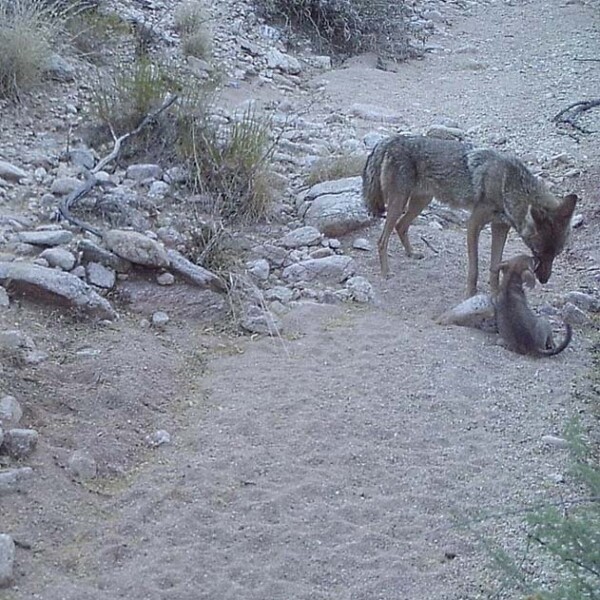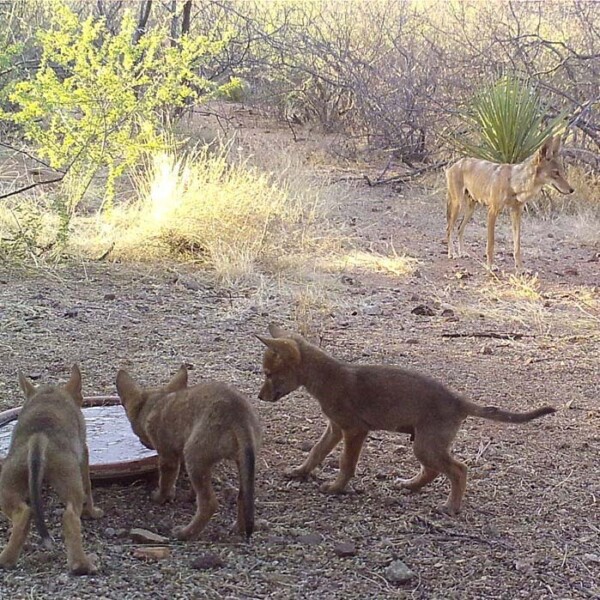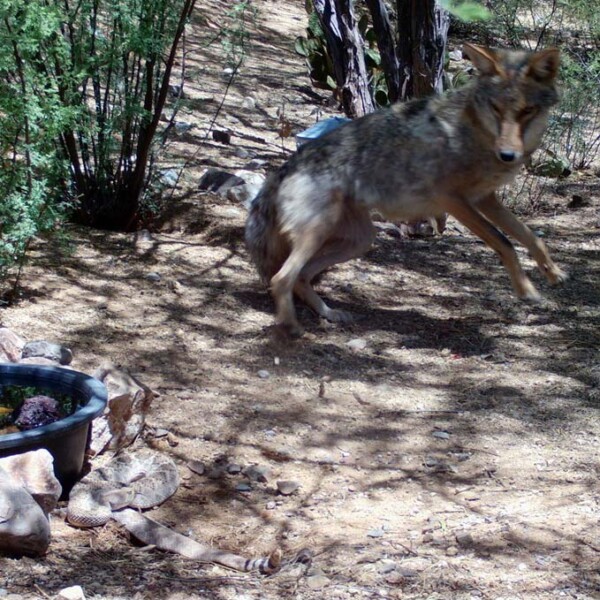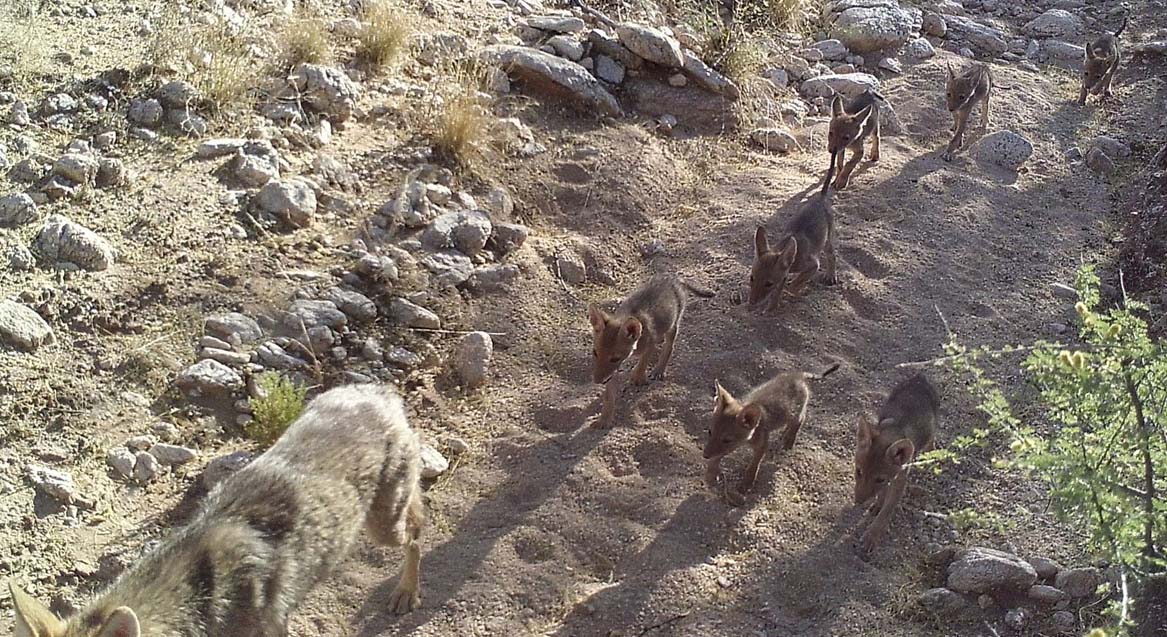When reviewing photos from Sky Island Alliance’s FotoFauna wildlife cameras each month, I always get excited to see which species will show up and what story they’ll tell. Recently it was all about coyotes. Hanging out in a wash, drinking from one of our volunteer’s backyards, and jumping back at the sight of a rattlesnake.
I kept looking through the month’s photos and videos and, at one point, couldn’t believe my eyes.
In frame after frame, a pack of four coyotes was hunting a white-tailed deer that was drinking from a watering hole. The pack surrounded the deer and waited for their chance as the deer remained in the water for the rest of the day and all night. Morning came, and the coyotes eventually found success (not shown in the video). It was a fascinating window into a world we don’t often see.
Which got me thinking more about these animals.
The coyote (Canis latrans) is native to North America and Central America. They are highly adaptable and can live in all kinds of habitats across the continent, including the Sky Islands. More recently they are even adapting to urban and suburban life. You may have seen them running down your road or street, slinking around and passing through yards and other in-between spaces. Here a moment, gone the next.
When we don’t see them, that’s often because coyotes keep different hours, typically hunting at night. They are carnivores par excellence — up to 90% of their diet is rabbits, squirrels, and other small rodents, whose populations they keep in check.
But coyotes also hunt deer and other mid-sized animals like javelinas in small packs, as another photo from the month showed. Like wolves, coyotes look for signs of prey, harass them, and later feed at the kill site.
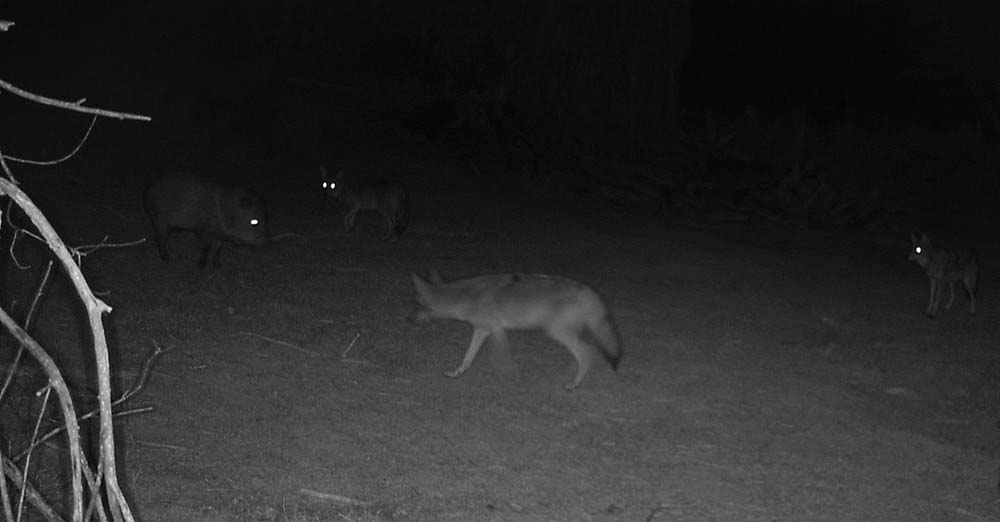
Photo of three coyotes circling a javelina at night by FotoFauna volunteers with Friends of Agua Caliente.
When food is in abundance, young coyote pups stay with their parents and hunt in packs. But they rarely last long together.
I wondered how many more weeks this family below would have together as a single traveling unit. Soon they would be reaching maturity, and competition for food among them would increase. The young pups would leave the pack and travel up to 90 miles to establish their own territory. Something to think about next time you see a coyote cross a road or wash. Who knows where they’re headed?
In the past, and too often today, coyotes have been villainized unfairly. But in the Sky Islands we know their worth and welcome what they can teach us by their mere presence.
Miguel Enriquez is our Sonoran Wildlife Specialist. He focuses on analyzing data from Sky Island FotoFauna and our Border Wildlife Study.

